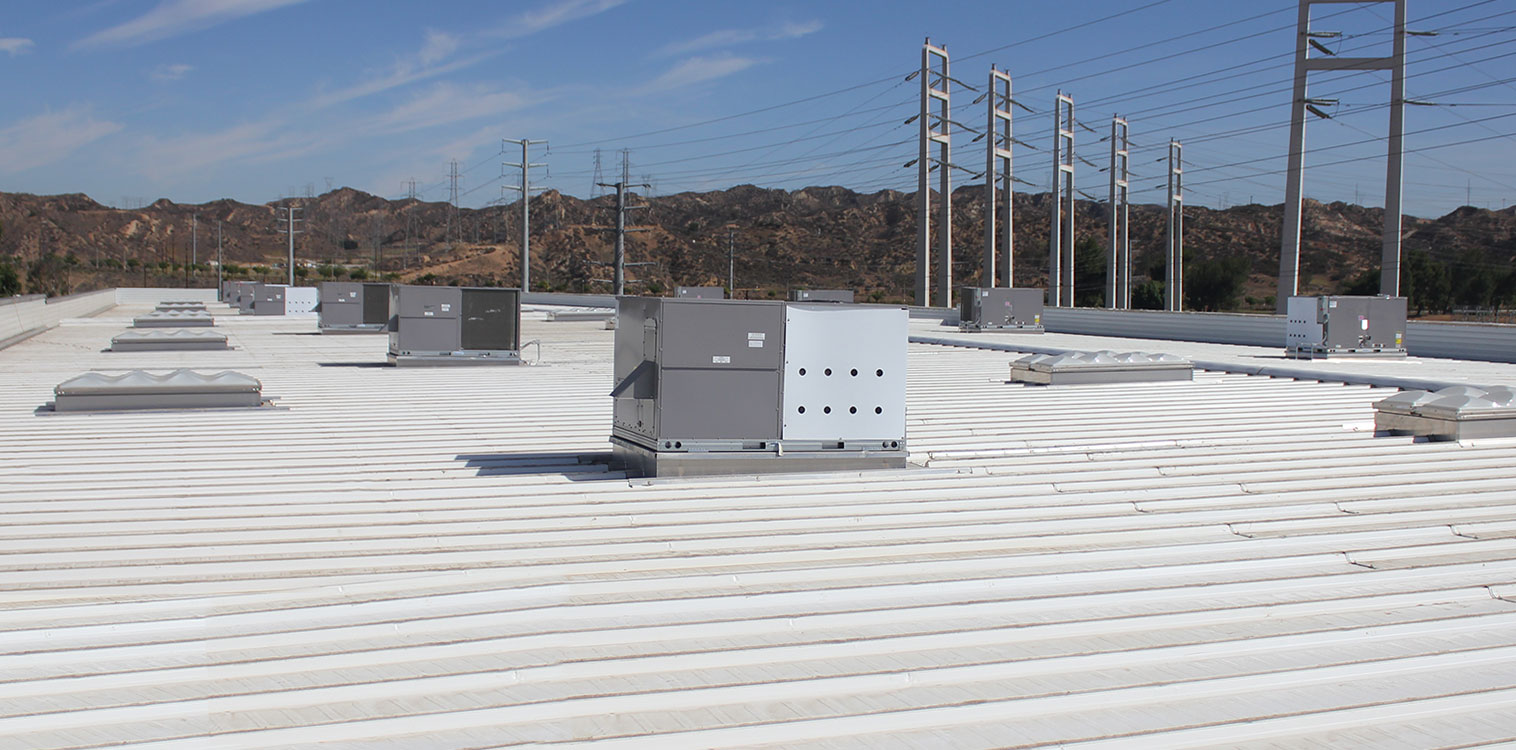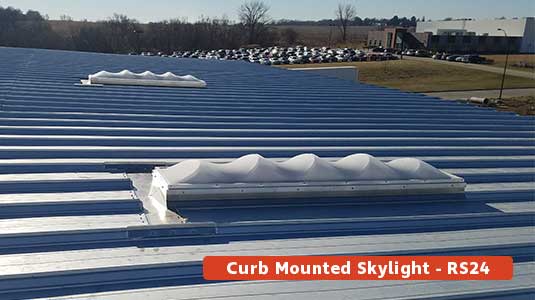Roof curbs serve a vital role in supporting rooftop equipment while ensuring a watertight seal for ducting or interior access. If your equipment does not require penetration beneath it, other solutions might be more suitable. Let us go through a few examples.
Equipment that typically needs a roof curb:
HVAC Units:
These units commonly feature ducting beneath them, making a roof curb essential. Even HVAC units with side ducting often require roof curbs to seal off duct penetration points and ensure proper installation. Common accessories include partitions for hanging ductwork beneath the unit, vibration isolators to control noise inside the building and seismic clips to secure the unit in case of an earthquake.
Powered Exhaust Fans:
These fans require direct penetration into the building and often incorporate backdraft dampers within the roof curb for best functionality and ventilation. These dampers are mounted on a damper support flange incorporated into the curb design. Other accessories include grease boxes and vented curb walls for kitchen exhaust systems.
Gravity Ventilators:
Passive vents rely on gravity and temperature differentials to circulate air which requires direct access to the building’s interior. Roof curbs are used to provide a secure mounting surface with a clear opening beneath the vent. These vents use screens to keep birds and insects out of the building.
Skylights:
These non-weight bearing roof curbs can be constructed with lighter gauge material to reduce costs. Unlike curbs for mechanical units, they are often sloped with the roof as a level surface is not needed. Roof curb liners are used to create a polished interior look. Skylights using roof curbs make it easier to replace damaged or fatigued skylights in the future, making them a preferred choice.
Roof Access Hatches:
Roof access points come in many sizes; but all need the use of a roof curb for installation. Roof hatches typically come as a complete unit incorporating the curb in the overall design.
Equipment that may not require a roof curb:
Air Condensing Units:
These units typically rely on pipe penetration rather than ducting, which can be managed using specialized rubber boots such as Master Flash. The Air Condensing Unit can be mounted on equipment rails that do not penetrate the roof. This saves labor and equipment costs.
Solar Power Equipment:
Photovoltaic arrays are often mounted using racking solutions, with controls and hardware installed separately. Look for platforms or equipment supports for a cost-effective means of supporting accessories.
Utility Set Fans:
Certain equipment sections, like utility set fans with side discharge, may not require openings beneath them. In such instances, alternative installation methods can be employed without the need for a roof curb.
Summary:
With over 60 years of industry experience, R&S Manufacturing and Sales can offer valuable insights and guidance tailored to your specific project requirements. When navigating the decision-making process about roof curbs, it’s crucial to partner with experienced fabricators like R&S.
While some rooftop equipment needs the use of roof curbs for proper installation and functionality, others can use alternative solutions. By understanding the unique needs of the equipment and collaborating with seasoned professionals, you can ensure the best performance and longevity of any rooftop system.






